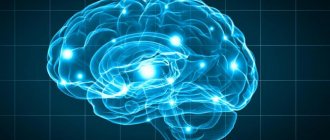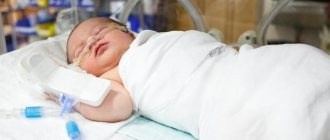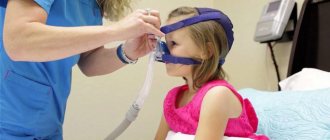Forecast
The prognosis depends on many factors: timeliness of assistance provided, general health, quality of treatment. In addition, the consequences of a stroke depend on the type of stroke, namely the area of the brain affected.
Let's look at the main types of stroke by area and their health consequences.
Major stroke
The outcome for the elderly is unfavorable, since the patient does not fully recover. The result is disability.
Unilateral stroke
The prognosis is influenced by the extent of the lesion and the timeliness of medical care. Often the outcome is death or paralysis. Only in isolated cases does the patient recover completely.
Brainstem stroke
The most dangerous species, often leading to death. The survivors remain disabled.
Cerebellar stroke
The prognosis depends on the extent of the lesion. If treatment is started in a timely manner and the patient is properly cared for during the rehabilitation period, he can fully or partially recover. However, most stroke survivors suffer from impaired mobility, which causes them to walk with support.
Spinal stroke
The prognosis is generally favorable and the mortality rate is low. If treatment is not started in time, the patient can be paralyzed. Problems in the functioning of the pelvic organs cannot be ruled out.
If you are over 80 years old
For people over 80 years of age, the prognosis is rarely good, regardless of the type of stroke. The fact is that at such a respectable age the condition is complicated by existing chronic diseases and weakened immunity, which reduces the chances of recovery.
Elderly people at this age most often fall into a coma, during which they do not breathe on their own. Their blood pressure decreases, which leads to impaired blood circulation. Fever may occur. Lives in a coma for an average of 7 days, after which he dies.
In less severe cases (with a unilateral stroke), the patient remains disabled due to paralysis of the side of the body opposite to the lesion and other disorders.
Causes
The development of the disease can be caused by:
- arrhythmia;
- hypertension;
- cardiac ischemia;
- vascular diseases;
- blood clotting pathologies;
- kidney diseases;
- diabetes;
- atherosclerosis;
- obesity;
- thrombophlebitis, etc.
In addition, ischemic stroke can result from smoking and regular intake of significant doses of alcohol, constant psycho-emotional overload, overeating and excess weight. Also, the development of cerebral infarction can cause severe headaches that are chronic.
Consequences of a stroke
Unfortunately, as a result of brain damage, important functions are impaired, which are not always amenable to recovery. Let's look at the main ones.
Paralysis
It involves damage to the nerve endings that control muscle function, resulting in loss of motor function. Paralysis can be of the whole body or part of it. The most common form is one-sided. May affect facial muscles.
Speech dysfunction
A common consequence of a stroke that occurs due to damage to the areas of the brain responsible for speech. Expressed in complete/partial loss of the ability to speak and perceive the words of others. With a partial form, the conversation is unclear; with a complete form, there is an inability to utter at least a word.
Deterioration of the visual organs
A stroke can damage the parts of the brain responsible for visual function. As a result, there is deterioration in vision, loss of individual parts from the field of view (up to ½), and strabismus (difficult to treat).
Impaired motor coordination
Most often occurs with a brainstem stroke. Manifests itself in the form of dizziness and staggering when moving. Depending on the form of the pathology and severity, it may manifest itself during the first days after the attack or over a longer period.
Swallowing dysfunction
It occurs due to a disruption of the reflex process or paralysis of facial muscles. It is also a consequence of brainstem infarction.
May manifest:
- Difficulty chewing food.
- Difficulty swallowing food.
- Pain while eating.
- The entry of food particles from the oral cavity into the respiratory organs, in particular the nose.
Formation of bedsores
It is observed in paralyzed patients due to prolonged stay in one position. In this case, less nutrients reach the tissues. The result is their starvation and further death. The areas most affected are areas closely pressed to the bed.
Pneumonia
As a result of paralysis, the patient cannot cough up the mucus that accumulates in the bronchi and enters the lungs. Next, inflammation begins.
Depressive state
The most common consequence that minimizes the effectiveness of treatment and rehabilitation. You need the help of a qualified psychologist and a course of antidepressants.
Coma
One of the dangerous consequences, considered a transitional state to death. During this period it is noted:
- slowing down metabolism;
- decrease in body temperature;
- change in breathing pattern;
- falling into unconsciousness;
- lack of response to external stimuli.
The prognosis for coma is predominantly unfavorable.
Symptoms
The development of the disease is indicated by the following signs characteristic of damage to certain areas of the brain:
- common symptoms of a stroke include fever, nausea, loss of consciousness, problems with orientation, headache;
- The list of ischemic signs includes impaired motor function, dizziness, incoherent speech, vision problems, difficulty swallowing, amnesia, depression, impaired logical functions and the inability to perform normal actions, signs of paralysis.
Are you experiencing symptoms of an ischemic stroke?
Only a doctor can accurately diagnose the disease. Don't delay your consultation - call
Positive and negative factors affecting the prognosis of stroke
According to statistics, approximately 8% of people who have suffered a stroke can return to their previous lives and are recognized as able to work, 48% of patients after a stroke are recognized as able to work with limitations, the rest require care. A neurologist at the Yusupov Hospital will conduct the necessary diagnostics and select effective treatment that can help minimize unpleasant consequences.
Factors influencing the prognosis of life after stroke include the following:
- age - the older the patient, the less chance of full recovery. In patients over 60 years of age, the mortality rate is above 90%;
- affected part of the brain - if vital centers in the brain die, the consequences are difficult to predict. Even with timely assistance, a person may remain disabled or die;
- prevalence of the lesion - the larger the area of the lesion, the more vital functions the patient loses;
- if a stroke occurs against the background of atherosclerosis or hypertension, then you should prepare for more severe consequences;
- When cerebral tissue edema forms, in most cases the patient will develop neurological symptoms.
A positive prognosis for stroke is possible if:
- confirmation of a small lesion;
- maintaining consciousness;
- normal blood pressure;
- absence of atherosclerotic changes in blood vessels;
- absence of arrhythmia and other heart diseases;
- under 40 years of age.
It has also been proven that a patient who has a creative profession or has constantly succumbed to moderate mental stress has a better chance of full recovery. The possibility of regaining lost functions and skills will depend on social, psychological factors and the patient’s readiness for long-term rehabilitation.
The prognosis for a stroke is influenced by medical factors, including the time of admission to the intensive care unit or intensive care unit, skillful first aid, high-quality and timely diagnosis, and timely start of rehabilitation. At the Yusupov Hospital, the patient is immediately sent to the neurology clinic, where experienced doctors work with him. After providing basic therapy and drug treatment, the patient is transferred to a rehabilitation clinic. An integrated approach to treatment allows you to restore lost functions as effectively as possible.
Stages of medical care for stroke
The main principle of managing patients with acute stroke is the staged organization of medical care.
The following stages are distinguished:
I. Diagnosis of stroke and emergency measures at the prehospital stage.
II. The earliest possible hospitalization of all patients with stroke.
III. Diagnosis of the nature of the stroke.
IV. Clarification of the pathogenetic subtype of stroke.
V. Selection of optimal treatment tactics.
VI. Rehabilitation and measures for secondary prevention of stroke.
Stages of medical care for acute stroke and the goals of its provision:
1. Prehospital
(doctor, family or local doctor, ambulance or FAP paramedic)
- Diagnosis of stroke
- Carrying out emergency treatment measures
- Hospitalization
Diagnostics:
History (presence of cerebrovascular pathology, high blood pressure and other risk factors). Acute development of neurological symptoms (weakness in the limbs, impaired speech, breathing, consciousness, facial asymmetry, etc.).
The main task at the prehospital stage is the correct and rapid diagnosis of stroke as such. An exact determination of the nature of the stroke (hemorrhagic or ischemic) is not required; it is only possible in a hospital after CT or MRI studies of the brain. The clinical picture of the development of stroke is characterized, as a rule, by the sudden (within minutes, less often hours) appearance of focal (or cerebral, and in the case of subarachnoid hemorrhage (SAH) - meningeal symptoms.
For correct and timely diagnosis of stroke, it is necessary to know the focal, cerebral and meningeal symptoms characteristic of this disease.
Hemorrhagic strokes and hemorrhagic disease of the newborn
Few people know that stroke occurs not only in adults. Among the fund's wards are children, including those who are struggling with the consequences of perinatal stroke. We asked a pediatric hematologist from the National Medical Research Center for Pediatric Orthopedics. D. Rogacheva Fedorova Daria Viktorovna to tell about childhood strokes, why they happen and how to recognize the symptoms of a stroke in an infant.
Pediatric hematologist NMRC DGOI named after. D. Rogacheva Fedorova Daria Viktorovna
Strokes in newborns, as in older age groups, are the result of blockage of a blood vessel in the brain by a thrombus or rupture of such a vessel. Both of these causes cause damage to the brain substance surrounding the vessel. In medical terms, perinatal stroke is an acute cerebral circulatory disorder with chronic consequences that developed during the period from the 20th week of intrauterine development to the 28th day of the child’s life. In newborn children, hemorrhagic strokes (hemorrhages) occur approximately 3-4 times less often than ischemic strokes (that is, caused by thrombosis). Intracranial hemorrhage can be primary, or it can develop secondarily after an episode of thrombosis (the so-called hemorrhagic impregnation of ischemic foci). Perinatal stroke often causes chronic neurological deficits.
Clinical manifestations of stroke in a newborn child may include lack of response to external stimuli, episodes of convulsions, disturbances in muscle tone, weakness in the limbs, apnea (breathing problems), and breast refusal.
Evaluation of a child with suspected stroke includes examination by a neurologist and pediatrician, imaging of the brain (computed tomography or, preferably, magnetic resonance imaging, as well as ultrasound neurosonography to detect hemorrhages in the ventricles of the brain), as well as laboratory tests aimed at identifying the cause of the incident (in particular, blood clotting disorders). If the first clinical manifestation in a child is seizures, an examination aimed at excluding possible causes other than stroke (infections, electrolyte disturbances, inborn errors of metabolism), as well as EEG monitoring, is also necessary.
Premature babies (especially those born before the 28th week of gestation) are characterized by hemorrhages in the ventricles of the brain, associated primarily with the anatomical and physiological characteristics of a very premature baby. At the same time, in most cases (up to 75%) of hemorrhagic strokes in full-term newborns, the cause of the primary intracranial hemorrhage cannot be determined. Only a small part of them is a clear consequence of blood coagulation disorders (thrombocytopenia, hemophilia, hemorrhagic disease of the newborn, etc.) or cerebral vascular abnormalities (cavernous and arteriovenous malformations or aneurysms).
A high risk of intracranial hemorrhage (up to 25%) is associated with such a rare disease as neonatal alloimmune thrombocytopenia (NAIT). In this disease, the mother’s body produces antibodies to the fetal platelets. Passing through the placenta, antibodies destroy fetal platelets, causing deep thrombocytopenia in the baby before birth, while the mother's platelet count remains normal. Up to half of all intracranial hemorrhages during NAIT occur in utero. Intracranial hemorrhages occur much less frequently in newborns with hereditary coagulation disorders. In severe hemophilia, intracranial hemorrhage becomes the first manifestation of pathological bleeding in 2-3% of cases.
Another important and, most importantly, potentially preventable risk factor for intracranial hemorrhage in newborns is vitamin K deficiency.
Newborns are at risk for the development of vitamin K because their functionally immature liver cannot yet effectively utilize vitamin K. In addition, vitamin K does not pass well through the placenta, which leads to a lack of its reserves in the child’s body at the time of birth. A child in the first months of life receives little vitamin K from food (this is especially true for children who are exclusively breastfed, since breast milk contains less vitamin K compared to adapted milk formulas). In older children and adults, a significant proportion of vitamin K is formed by bacteria living in the intestines, however, the microflora of a newborn child is in its infancy and cannot yet compensate for the deficiency of vitamin K. Normally, the concentration of vitamin K in the blood reaches “adult” values by the age of 1 month .
Severe deficiency of vitamin K can lead to the development of the so-called hemorrhagic disease of newborns (a more modern name is vitamin K deficient bleeding (VKDB)). The risk of developing hemorrhagic disease of the newborn increases in babies whose mothers took certain antibiotics (for example, cephalosporins), anticonvulsants, and coumarin anticoagulants (for example, warfarin) during pregnancy.
Clinical manifestations of hemorrhagic disease of newborns include the appearance of bruises, bleeding from the mucous membranes and from the umbilical cord, regurgitation streaked with blood or blood in the stool, and intracranial hemorrhages.
There are three forms of hemorrhagic disease of newborns:
- Early (develops in the first 24 hours of a child’s life and is usually associated with the mother taking drugs that block the metabolism of vitamin K, for example, some anticonvulsants, the risk of intracranial hemorrhage is up to 25%,
- Classic (develops between 2 and 7 days of life and in most cases can be prevented by prophylactic administration of vitamin K at birth),
- Late (in fact, it no longer refers to the neonatal period and develops between 2 weeks and 6-8 months of life, risk factors are pathology of the gastrointestinal tract that impairs the absorption of fats, pure breastfeeding and refusal of prophylactic administration of vitamin K in the maternity hospital), according to According to some data, the risk of developing intracranial hemorrhage reaches 50%.
Vitamin K deficiency bleeding should be included in the differential diagnosis in all cases of increased bleeding and, especially, intracranial hemorrhage in children in the first six months of life, especially those who are exclusively breastfed and who have not received vitamin K prophylaxis in the maternity hospital.
The diagnosis of vitamin K-dependent bleeding can be confirmed by studying the coagulogram (extension of prothrombin and activated partial thromboplastin time with normal fibrinogen concentration and normal platelet count). Treatment is immediate administration of vitamin K; if bleeding is severe, a transfusion of fresh frozen plasma may be required.
Hemorrhagic disease of the newborn is a well-known risk factor for intracranial hemorrhage and other severe bleeding. Therefore, in recent decades, prophylactic intramuscular administration of vitamin K to newborns on the first day of life has been a common practice. According to the recommendation of the Russian Society of Neonatologists, a vitamin K preparation (Vikasol) should be administered to all newborns in the first hours after birth once intramuscularly at a dose of 1 mg/kg (0.1 ml/kg). Similar recommendations (intramuscular administration of vitamin K to all newborns) exist in the USA, Canada, European Union countries, Israel, Australia, and Japan.
If the patient does not have congenital disorders of vitamin K metabolism, which are extremely rare, and severe pathology of the gastrointestinal tract, which impedes adequate absorption of fats and fat-soluble vitamins, after treatment, vitamin K-dependent bleeding does not recur at an older age and does not require regular monitoring coagulograms. A history of hemorrhagic disease of a newborn is in no way a contraindication to rehabilitation measures aimed at correcting the existing neurological deficit.
Intracranial hemorrhages caused by vitamin K deficiency can lead to profound disability and even death. The administration of vitamin K is not a vaccination; there are practically no absolute contraindications for its administration in the maternity hospital. Therefore, even if for some reason you refuse to vaccinate your baby in the maternity hospital, do not refuse to administer vitamin K. This simple manipulation can significantly reduce the risk of very serious complications.
Support the work of the foundation with a donation. Help us fight stroke!
Public offer to conclude a donation agreement
The ORBI Stroke Foundation (Executive Director: Alexander Nikolaevich Komarov) invites citizens to make a donation under the following conditions:
1. General provisions 1.1. In accordance with paragraph 2 of Art. 437 of the Civil Code of the Russian Federation, this offer is a public offer (hereinafter referred to as the Offer). 1.2. In this Offer, terms are used that have the following meaning: “Donation” - “donation of a thing or right for generally beneficial purposes”; “Donor” - “citizens making donations”; “Recipient of the donation” is the “ORBI Stroke Foundation.”
1.3. The Offer is valid indefinitely from the moment it is posted on the website of the Donation Recipient. 1.4. The recipient of the donation has the right to cancel the Offer at any time by deleting it from the page of his website on the Internet. 1.5. The invalidity of one or more terms of the Offer does not entail the invalidity of all other terms of the Offer.
2. Essential terms of the donation agreement: 2.1. The donation is used for the maintenance and conduct of the statutory activities of the Donation Recipient. 2.2. The donation amount is determined by the Donor.
3. The procedure for concluding a donation agreement: 3.1. In accordance with paragraph 3 of Art. 434 of the Civil Code of the Russian Federation, the donation agreement is concluded in writing by accepting the Offer by the Donor. 3.2. The Offer can be accepted by the Donor transferring funds in favor of the Recipient of the donation by payment order using the details specified in Section 5 of the Offer, indicating in the line “purpose of payment”: “donation for the maintenance and conduct of statutory activities,” as well as using plastic cards, electronic payment systems and other means and systems that allow the Donor to transfer donations of funds to the Recipient. 3.3. Commission by the Donor of any of the actions provided for in clause 3.2. Offer is considered acceptance of the Offer in accordance with clause 3 of Art. 438 of the Civil Code of the Russian Federation. 3.4. The date of acceptance of the Offer - the date of conclusion of the donation agreement is the date of receipt of the donation in the form of funds from the Donor to the current account of the Donation Recipient.
4. Final provisions: 4.1. By performing the actions provided for in this Offer, the Donor confirms that he is familiar with the terms of the Offer, the goals of the Donation Recipient, is aware of the significance of his actions and has every right to carry them out, and fully and unconditionally accepts the terms of this Offer. 4.2. This Offer is governed by and construed in accordance with current Russian law.
5. Signature and details of the Donation Recipient
ORBI Stroke Foundation
OGRN: 1107799030349 INN/KPP: 7728123272/772801001 Location address: 117321 Moscow, st. Profsoyuznaya, 126, building 1
Bank details: Bank account number: 40703810438180000307 Bank: PJSC Sberbank of Russia, Moscow Bank BIC: 044525225 Bank correspondent account number: 30101810400000000225
Executive Director Alexander Nikolaevich Komarov
I agree with the offer
Consent to the processing of personal data
The user, by leaving a request, submitting a subscription, commenting, requesting feedback, registering or performing other actions related to entering his personal data on the website https://orbifond.ru, accepts this Consent to the processing of personal data (hereinafter referred to as the Consent ), located at https://orbifond.ru/personal-data-usage-terms/.
Acceptance of Consent is confirmation of the fact that the User agrees with all points of the Consent. The user gives his consent to the organization "ORBI Stroke Foundation", which owns the website https://orbifond.ru, to process his personal data with the following conditions:
The user consents to the processing of his personal data, both without the use of automation tools and with their use. Consent is given to the processing of the following personal data (that is not special or biometric): • last name, first name, patronymic; • email address(es); • other data provided by the User.
The user's personal data is not publicly available.
1. The purpose of processing personal data is to provide full access to the functionality of the site https://orbifond.ru.
2. The basis for the collection, processing and storage of personal data are: • Art. 23, 24 of the Constitution of the Russian Federation; • Art. 2, 5, 6, 7, 9, 18–22 of the Federal Law of July 27, 2006 No. 152-FZ “On Personal Data”; • Art. 18 of the Federal Law of March 13, 2006 No. 38-FZ “On Advertising”; • Charter of the organization “Stroke Foundation ORBI”; • Personal data processing policy.
3. During the processing of personal data, the following actions with personal data will be performed: collection, recording, systematization, accumulation, storage, clarification (updating, changing), extraction, use, transfer (distribution, provision, access), depersonalization, blocking, removal, destruction.
4. Transfer of personal data hidden for general viewing to third parties is not carried out, except in cases provided for by the legislation of the Russian Federation.
5. The user confirms that the personal data he specified belongs to him personally.
6. Personal data is stored and processed until the liquidation of the ORBI Stroke Foundation organization. Storage of personal data is carried out in accordance with Federal Law No. 125-FZ “On Archiving in the Russian Federation” and other regulatory legal acts in the field of archiving and archival storage.
7. The user agrees to receive information messages from the site https://orbifond.ru. Personal data is processed until the User unsubscribes from receiving information messages.
8. Consent can be revoked by the User or his legal representative by sending a Revocation of Consent by email – marked “Revocation of consent to the processing of personal data.” If the User withdraws consent to the processing of personal data, the organization "ORBI Stroke Foundation" has the right to continue processing personal data without the User's consent if there are grounds specified in paragraphs 2 - 11 of part 1 of article 6, part 2 of article 10 and part 2 of article 11 of the Federal Law No. 152-FZ “On Personal Data” dated July 27, 2006. Deletion of personal data results in the inability to access the full version of the functionality of the site https://orbifond.ru.
9. This Consent is unlimited and is valid all the time until the termination of the processing of personal data specified in clauses 7 and 8 of this Consent.
10. Location of the organization “ORBI Stroke Foundation” in accordance with the constituent documents: 117321 Moscow, st. Profsoyuznaya, 126, building 1.
I agree to the processing of my data Consent to the processing of data
Redirect to secure payment page...
Share








